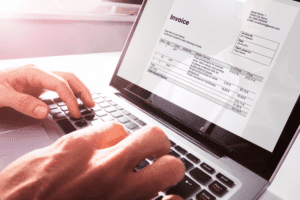
Simultaneously, allowance for doubtful debt account shows a closing balance of $5,000. Rather than pay this cost up-front and tie up a significant chunk of capital, Show-Fleur makes this purchase on credit with a 90-day due date after invoicing. Fortunately, the seat vendor offered an early payment discount of 5%, meaning that when Show-Fleur paid off its full credit note within the first 30 days, it recouped $30 thousand in savings. Wanting to spruce up its aging inventory, Show-Fleur purchased new, climate controlled-seats for its fleet, delivering increased comfort for passengers and a cleaner, more modern look for vehicle interiors. The initial cost of this upgrade was $8 thousand per limo or $600,000 in total.
Popular Types of Contra Accounts
When accounting for assets, the difference between the asset’s account balance and the contra account balance is referred to as the book value. There are two major methods of determining what should be booked into a contra account. The net amount – i.e. the difference between the account balance post-adjustment of the contra account balance – represents the book value shown on the balance sheet. Sometimes, it is important to keep the original balance of the accounts and create the contra accounts to be able to calculate the net value of the account.
Get accurate contra account records with Invoiced
- Some of the most common contra assets include accumulated depreciation, allowance for doubtful accounts, and reserve for obsolete inventory.
- This helps the reader to know how many sales were actually made and how many customers had problems with the goods sold.
- There can be hidden value in stocks that have a lot of fully depreciated buildings.
- For example, a company has total fixed assets worth of $50,000 for the year ended 2019.
- Contra accounts are a little tricky to think about when you are first starting out.
Therefore, for these three, the debit balance actually represents a negative amount. A contra liability is an account in which activity is recorded as a debit balance and is used to decrease the balance of a liability. To illustrate, contra account let’s use the contra asset account Allowance for Doubtful Accounts. Since it is a contra asset account, this allowance account must have a credit balance (which is contrary to the debit balances found in asset accounts).

Is Treasury Stock a Contra Account?
A contra asset account is not classified as an asset, since it does not represent long-term value, nor is it classified as a liability, since it does not represent a future obligation. By reporting contra asset accounts on the balance sheet, users of financial statements can learn more about the assets of a company. For example, if a company just reported equipment at its net amount, users would not be able to observe the purchase price, the amount of depreciation attributed to that equipment, and the remaining useful life. Contra asset accounts allow users to see how much of an asset was written off, its remaining useful life, and the value of the asset. This depreciation is saved in a contra asset account called accumulated depreciation. The accumulated depreciation account has a credit balance and is used to reduce the carrying value of the equipment.

Whereas assets normally have positive debit balances, contra assets, though still reported along with other assets, have an opposite type of natural balance. Accountants use contra accounts rather than reduce the value of the original account directly to keep financial accounting records clean. If a contra account is not used, it can be difficult to determine historical costs, which can make tax preparation more difficult and time-consuming. Both the asset and the corresponding contra asset accounts must be stated clearly in the balance sheet.

For example, we need to keep the face value of a bonds payable and the premium amount in separate ledger accounts even though both have credit balances. A separate account used in such a situation is sometimes called a adjunct account. In an accounting system, ledger accounts are designed to contain only similar transactions and/or balances. A separate account is needed whenever the nature of transactions changes. It is because clubbing together dissimilar transactions impedes any analysis. For example, we need separate accounts to hold the actual cost of property, plant and equipment (PPE) and related accumulated depreciation.
- There are four key types of contra accounts—contra asset, contra liability, contra equity, and contra revenue.
- Contra accounts help provide more accurate financial information by separating certain items and highlighting their impact on the overall financial position.
- Accounting software can simplify the management of and reporting from your ledger.
- Namely, within a ledger, each account is intended to contain transactions and balances of a similar type only.
- If a contra account is not used, it can be difficult to determine historical costs, which can make tax preparation more difficult and time-consuming.
And when your business still has some of these outdated, unwanted, or unusable items in your inventory, you’ll want to offset the lost value of these assets in your general ledger and balance sheet. So rather than adjusting your Inventory account, you would update its contra account — Obsolete Inventory. In its general ledger, the business will want to capture its gross sales figures and the actual value of the discount. There is almost always a story behind data; a clarification or historical insight that changes the meaning behind raw figures. In a report, layering on that additional context can be easy, but in a general ledger, you have few options for conveying nuance and subtlety. Namely, within a ledger, each account is intended to contain transactions and balances of a similar type only.
Cash Flow Statement
The Allowance for Doubtful Accounts is directly related to the asset account entitled Accounts Receivable. Therefore, the net amount of the accounts receivable that is expected to turn to cash is $38,000. A contra account is a negative account that is netted from the balance of another account on the balance sheet. The two most common contra accounts are the allowance for doubtful accounts/bad debt reserve, which is subtracted from accounts receivable, and accumulated depreciation, which is subtracted from fixed assets.
- This requirement also comes from the accounting standard for inventories.
- A contra-asset account is an account that opposes the balances of other asset accounts.
- This contra account holds a reserve, similar to the allowance for doubtful accounts.
- Revenue is an income statement account, but it flows through to the equity section of retained earnings as well.
- Therefore, contra-asset accounts differ from other accounts that have a credit balance.
- However, the “Allowance for Doubtful Accounts” (or “Allowance for Uncollectible Accounts”) is a contra account related to the concept of bad debts.
